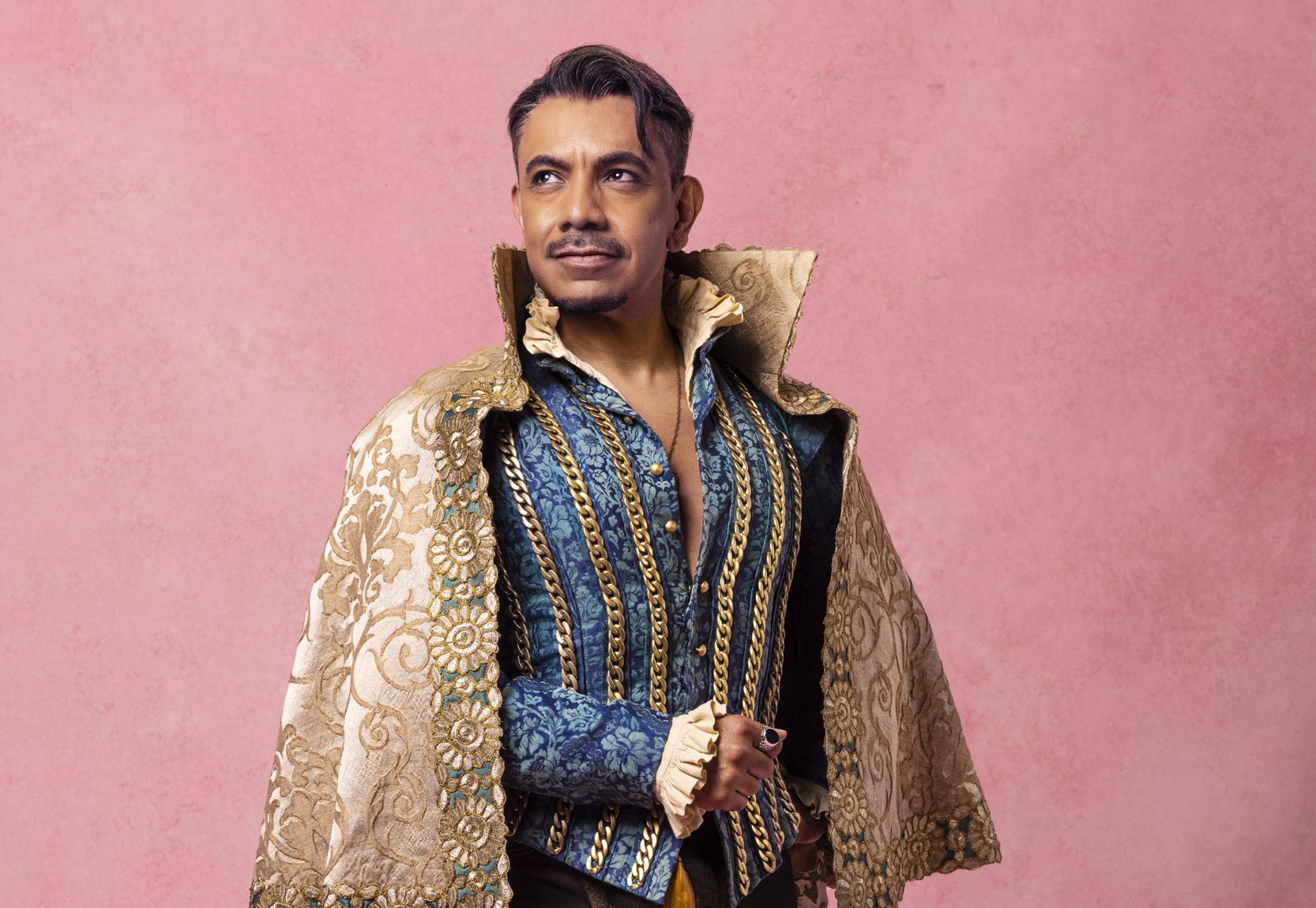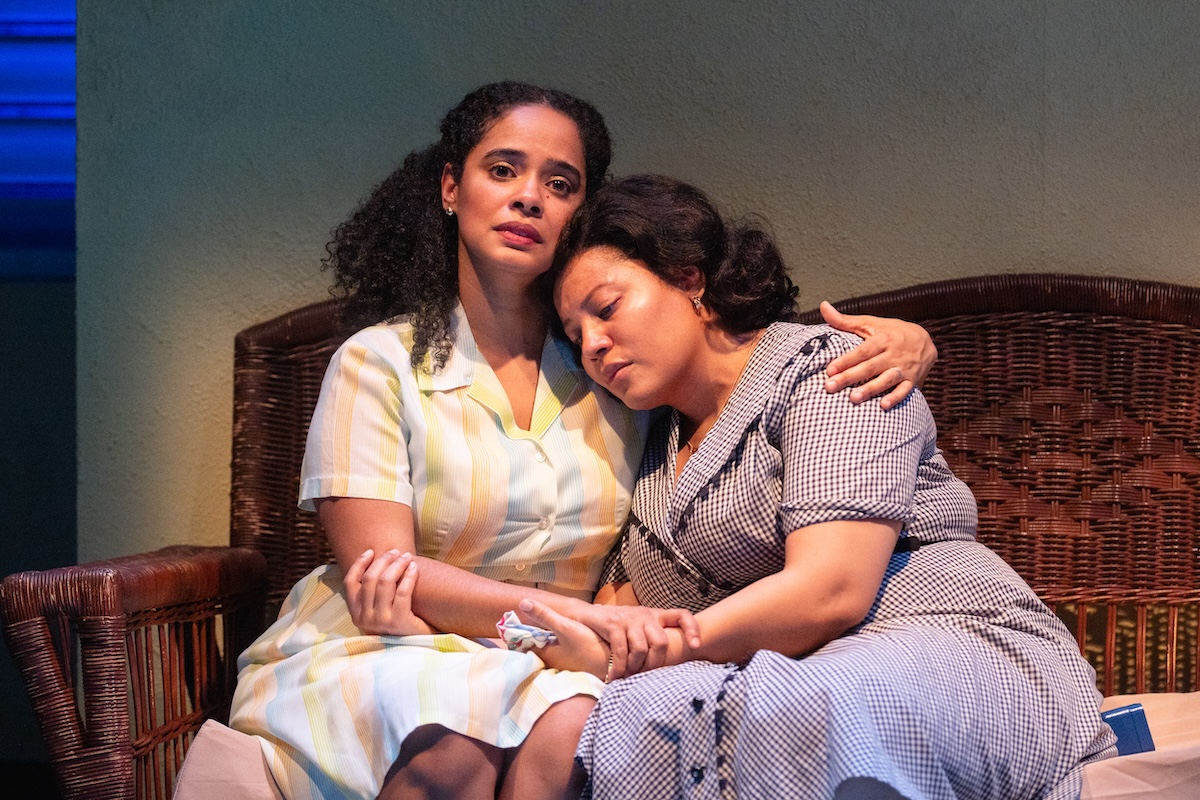Five Years in Skokie

in The Last Five Years
It is becoming increasingly–and somewhat disturbingly–clear that a great deal of the newest and most innovative theater work is no longer to be found on the New York stage. New York City has been less than kind to developing talent in recent years, so it’s no surprise that many of our most promising writers are flocking to various theaters around the country to introduce and shape their new plays and musicals. Just this month, Michael John LaChiusa (The Wild Party) and William Finn (Falsettos) are premiering new works in Chicago, and composer/lyricist Jason Robert Brown is debuting his latest musical, The Last Five Years, nearby.
Brown’s first show, the revue Songs for a New World, was enough to put him on the list of young writers to watch out for; but it was his highly accomplished score for the Hal Prince-Alfred Uhry musical Parade that solidified the 31-year old songwriter’s position as a major new Broadway talent. For his third major effort, Brown has chosen a less conspicuous place for the debut: Skokie, Illinois. The Last Five Years is now playing there at the Northlight Theatre, garnering the sort of reviews that most people dream of. Hedy Weiss at the Chicago Sun-Times proclaimed that “this poignant, richly dramatic and piercingly honest two-character show is destined to be a hit,” while Richard Christiansen at the Tribune implored “See it–I won’t leave you alone until you do.” But why is Brown doing the show in Skokie?
“Jason was the music director of Dinah Was last season,” says Northlight’s artistic director, B.J. Jones, “and I asked him if he had a vest pocket musical he would like to premiere here. This is the result.”
The Last Five Years lies somewhere in between Songs and Parade. It has a narrative, so it’s more than a revue; but it has no dialogue, so it’s not a book musical. The story of Jamie, an emerging novelist, and Kathleen, an aspiring actress, TLFY follows the couple as they fall in love, marry, then fall apart. But what may sound like a typical boy-meets-girl, etc. tale becomes much more complicated by way of its atypical structure, which has Jamie telling the story from beginning to end as Kathleen simultaneously tells it from the break-up back to the courtship. This twist, which makes the story so fresh, was Brown’s starting point.
“The structure was the impetus for the creation of the piece,” he explains. “Just to tell a story about two people whose marriage collapses is not, I think, a particularly good reason to write a musical. But to be able to use an exciting structural device to tell a story–that’s thrilling to me. The concept of playing with time this dramatically, to be able to use musical and lyrical motives to impart the temporal information, to be able to manipulate the emotional fabric of the piece through the structure–that’s sort of what theater is all about for me.”
For Brown, musical theater is about performing as well as writing. He played piano for Songs during its run at the WPA Theatre in 1995. He occasionally played in the orchestra pit for Parade on Broadway, and took up the baton to conduct the tour of that show. He’s back at the keys again with his new show, remaining in residence at Northlight during its run. “I’m amazed that everyone doesn’t want to play their own shows,” he says. “But not everyone can.” (Even Brown can’t do it all; he hired musical director Tom Murray to handle “every possible detail other than the actual playing of the show.”)
Brown feels that, through performing, he’s able to dig deeper into his own work: “I like being able to continue exploring the music while the show is going on. Professional musical theater has a tendency, even over a brief run, to become mechanical–particularly on the musical end of things. Having the composer in the pit, willy-nilly changing tempos and cues and even actual notes, keeps everyone fresh and on their toes.”

But he does admit that there are possible dangers to playing the show himself. “It puts me at a substantial disadvantage to be putting together the performance end of things when I need to be paying attention to the writing end,” he says. “I’ve only seen three or four performances of The Last Five Years, so I have to take on faith everyone’s statements that they’re putting up the show that I want. But that’s why I choose collaborators I love and trust.”
In this case, his chief collaborator has been Songs director Daisy Prince, whom he met shortly after arriving in New York City some 10 years ago. TLFY initially began as a song cycle but, realizing that it was becoming something bigger, Brown enlisted Prince’s help. “I went to Daisy and asked her to be on board and protect the musical integrity of the structure,” he relates. “She got what I was talking about right away and did an incredible job of visually clarifying and emphasizing what could, in other hands, have been a very obscure piece of theater.” One way Prince did this was by placing the action of the show on a turntable, thus literally moving the piece along to facilitate the unique structure of the storytelling.
The Last Five Years concludes Northlight’s current season. After selling a record number of tickets in the weekend after its opening, it extended its run by a week. The two energetic stars of the show are Norbert Leo Butz (last seen by New Yorkers in Saved and by Chicagoans in Cabaret) as Jamie and Lauren Kennedy (who has been tapped to lead Trevor Nunn’s upcoming London South Pacific) as Kathleen. The show begins with Kathleen singing of her heartache as she reads Jamie’s farewell note. This leads into Jamie’s account of their first meeting. And so the show drives forward (and backward), showing the couple’s life together through their alternating points-of-view in the musical’s 14 vignettes. Jamie is gradually overcome by success and temptation, while Kathy goes from frustration back to the elation of first love.
This structure makes for a highly unusual aspect of the piece: The young lovers don’t really get to sing together. As the characters are almost always seen in different time frames, the only chance they have to duet is at their wedding, when their stories meet. “A song sung by one person is generally an extremely emotional statement,” Brown observes. “The confessional nature of singing to an audience brings out all those hiddenfears and joys. I think it’s in fact much more difficult to write a duet that seems honest and is still intensely emotional. People don’t say those deep, powerful things to each other; they say them to themselves. Song takes us to that internal place.”
Musically, Brown seems to be getting back to his roots with The Last Five Years, which he describes as “a very acoustic-rock kind of show.” He cites pop music as having perhaps the greatest impact on his own work, and he has often named songwriters Billy Joel and Joni Mitchell as major influences. Songs for a New World, made up primarily of pieces that Brown had originally written for himself to perform, was a way of bringing the singer-songwriter (a staple of the pop world) into the realm of theater, while Parade was a far more traditional musical. With TLFY, he says, “I wanted to find a way to write the kind of music that would make sense for these characters and not have it turn into an amplification festival, with everyone wearing headset mikes.” To give the show a more intimate feel, he scored it for an ensemble which, in addition to himself on piano, includes a violinist, bassist, acoustic guitarist, and two cellists. “The ensemble is very flexible, and also challenging and exciting to write for,” he says. “This is the kind of music these characters would sing.”
And he should know. Jamie and Kathleen–artistic-type twentysomethings living in present-day New York, described as “a nice Jewish boy and good Irish-Catholic girl”–bear no small resemblance to Brown and his own ex-wife (also an actress), who had a similarly ill-fated marriage. But the composer resists the idea that The Last Five Years is autobiography. “My instinct to start writing a show about the arc of a failed marriage was not consciously related to the fact that I was going through a divorce at the time. But,” he acknowledges, “I know how hard it is to make people believe that. The fact is, I started thinking of how to write a song cycle for two great singers, and this idea is what came up. As the writing of the piece went on, I began to see very clear parallels between my life and the show, and I let some of those parallels stand unchallenged; but this was never meant to be a piece about me and my ex-wife. I don’t think it would be fair to either of us to suggest that what happens in The Last Five Years ultimately represents either of us or the life we shared.”

What it does represent is a willingness on the part of Brown and his collaborators to write musical theater that is emotional, inventive, and, in some ways, deeply personal. Though his work is always infused with humor, this isn’t an upbeat show–certainly not what Broadway has been clamoring for lately. But that’s New York’s loss. Critics loved TLFY, and Chicago locals have been responding positively as well. “There are a few different kinds of audiences at Northlight,” Brown explains. “First, there are the sophisticated theater people coming in from downtown. They respond very strongly–laughing in all the right places, applauding enthusiastically, crying like babies at the end. Next there’s a core of collegiate musical theater freaks who are thrilled to be seeing a new musical in such an intimate and unexpected place; they tend to laugh and clap and scream and cry at the first opportunity. I love these people. Finally, there are the Northlight subscribers: a group, fairly large in number, of suburban senior citizens who like to see a show every now and then. Having these people in the audience is like performing at Madame Tussaud’s. They don’t respond in any audible or visible way [during the performance], but they love the show. As they walk out, they’re all atwitter about how much they enjoyed it and how moving and emotional it was.
“The thing all the audiences have in common,” continues Brown, “is that, at the end of each performance, there really is a palpable 10 or 15 second pause before anyone starts applauding. The emotional content of the last five minutes of the piece wipes people out, because the cumulative impact of these 14 scenes is very powerful.”
Will New York see The Last Five Years anytime soon? Brown is currently negotiating future productions, and it looks like a cast album will be recorded by RCA Victor in September. But for now, and until July 1st, Skokie is where it’s at.












